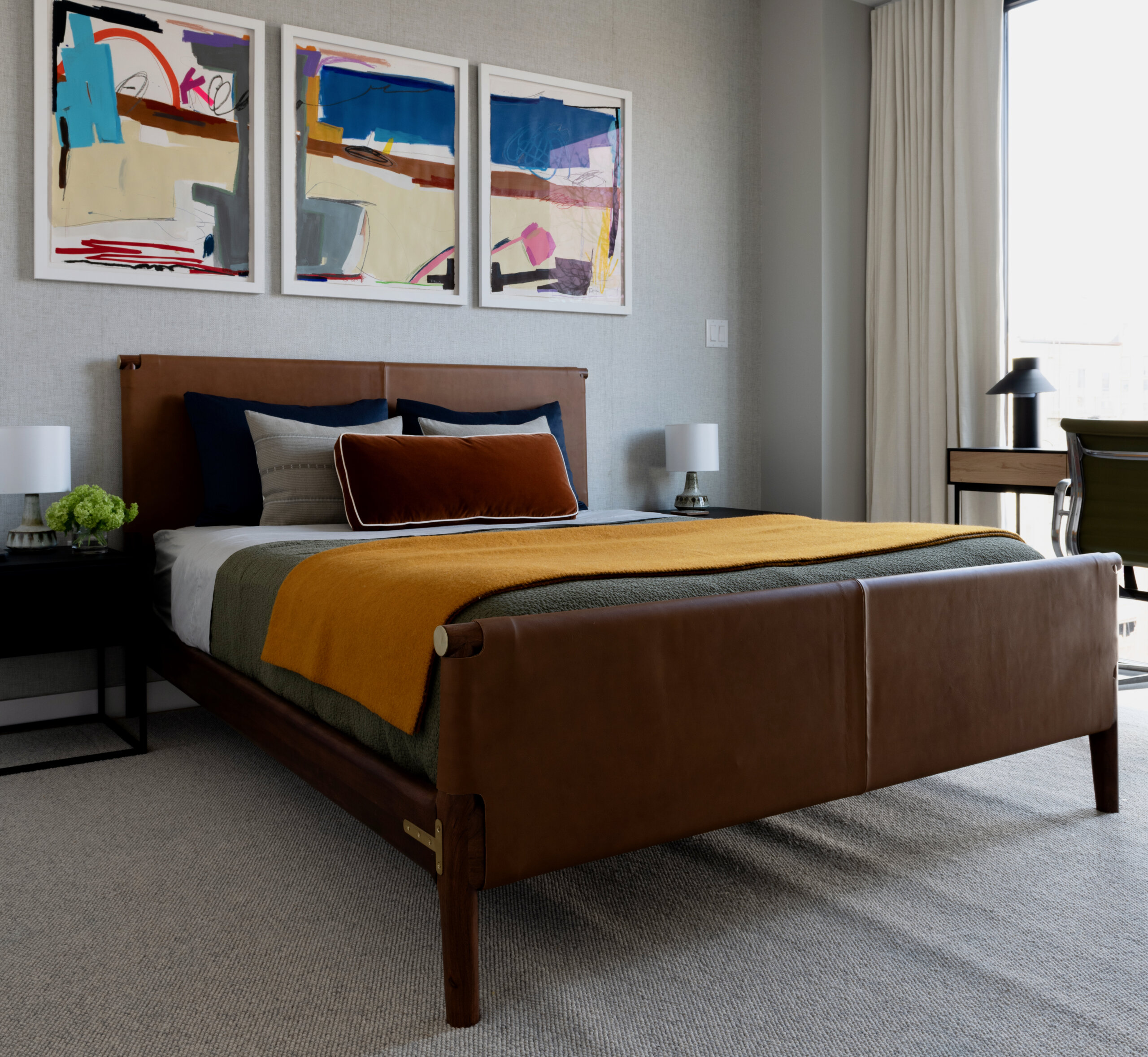Walkabout: Greenpoint’s Edwards Hotel, Part 2
Read Part 1 and Part 3 of this story. There is something about a hotel that just lends itself to stories; a place where travelers from far-away places stay when in town, sharing the halls and the bathroom facilities with other travelers, as well as locals who also call the hotel home. A good hotel…

Read Part 1 and Part 3 of this story.
There is something about a hotel that just lends itself to stories; a place where travelers from far-away places stay when in town, sharing the halls and the bathroom facilities with other travelers, as well as locals who also call the hotel home.
A good hotel is clean and orderly, with a friendly innkeeper and helpful staff. A superior hotel is all of that, plus a good meal in the dining room, and a feeling of safety and security; a home away from home. Silas Edwards tried very hard to run that kind of establishment at the Edwards Hotel in Greenpoint, at the turn of the 20th century. After all, he was the owner of Greenpoint’s only full service hotel.
We met Mr. and Mrs. Edwards in our last chapter, the proprietors of a large, rambling wood framed inn on Manhattan Avenue at Clay Street, in busy Greenpoint. Since establishing himself in 1879, Silas Edwards had worked hard to make his hotel a household name.
Greenpoint was home to a bustling business community, with shipbuilding, oil and gas, ceramics, glassblowing and other industries thriving in the neighborhood. Salesmen, buyers and other businessmen interested in these industries needed places to stay when in town.
The hotel was close to public transportation, with a large streetcar terminal nearby, which not only made it easy to get to, but the facility itself also employed many single men who worked long hours, and called the nearby hotel home. Lodgers made up a sizable portion of the hotel’s guests.
Hotels can also be places where people who are up to no good choose to stay. Thieves, confidence men, those carrying out illicit affairs, they were also notorious guests at a hotel, and Silas Edwards was on the lookout for them.
A stern and principled man, he and his wife did not put up with any impropriety. Women were not guests at the hotel, and while they could enjoy the meals in the hotel’s restaurant, they could not stay overnight.
In spite of all his precautions, incidents happened at the hotel, and in our last chapter, two of the most notable stories in the history of the hotel were told. There would be more.
In 1905, Edwards embarked on an expensive, $140,000 remake of his hotel. It had been an interconnected row of two story wood framed buildings running the length of most of that block of Manhattan Avenue, with a taller, four story building as the main entrance, and heart of the hotel.
He began a total overhaul, tearing down most of the wood frames and replacing them with masonry, and in the process expanding the height of the buildings, making space for a new hotel with almost 300 rooms. The new buildings had steam heat, more bathrooms, and a new restaurant and lobby.
He told the papers that he was confident he could fill the rooms in no time, as he was turning potential guests and lodgers away every day.
Business was good, so good that another article on the same page of the local Greenpoint newspaper that announced the expansion, also complemented Mr. Edwards on the launch of his yacht, the Almeda, which he had also rebuilt and modernized, adding a new fuel efficient motor, making it the most handsome boat at the local Ravenswood Boat Club. The hotel business was truly a good business to be in.
Of course, running a hotel can get expensive, what with guests using a lot of water to bathe and perform their daily ablutions. One must cut expenses where one can, and apparently, Silas Edwards was saving money by taking advantage of the city’s carelessness.
In 1906, the papers announced that the Edwards Hotel had no water meter, and had not been charged for water…ever. The city was supposed to install a water meter in every commercial building, but somehow had overlooked the Edwards Hotel.
The end of the year-long renovations had brought an inspector down to the site, after all those years, and to his surprise, the hotel was without a meter. Buildings Commissioner Ellison told the newspapers, “It goes to show that the men in charge of the inspections have not been sufficiently diligent.
Our inspectors are turning up these things every day. Taken altogether, they prove that things have been run too loosely for many years.” Presumably, the hotel found itself paying for water, after all these years.
In 1907, Mrs. Edwards died. She was the love of his life, his stalwart companion and helpmate. She had helped him grow the hotel from the beginning, and was the kind of woman who could put a meal on the table for boarders like a kindly relative, but could also find a deadbeat lodger, or a man with a forbidden lady caller, and drag both of them out into the street, and send them packing.
Mr. Edwards was devastated, and remained depressed for years. The only things keeping him going were the hotel and his faith in Christian Science.
He believed that the dead could come back and speak to the living, and he knew his wife was watching over him. It became a habit of his to take an afternoon nap, and during one of these naps, his wife came to him in a dream.
She told him to buy the building next door to the hotel, a wood framed building that sat on the corner of Manhattan and Clay, and wrapped around Clay Street, towards Franklin St. Buy it, she told him, and put a bowling alley on the ground floor, make hotel rooms above, and paint the building white.
He woke up with a start, and ran downstairs to the bar, where he told the story to the barman. The next week, he bought the building, put a bowling alley on the ground floor, made hotel rooms above, and painted the building white. The whole affair was a success, until 1917, when a fire burned the upper stories of the annex.
One of the guests had been storing motion picture film in the room, which was very flammable, and somehow it had ignited, and the blaze spread to other rooms on the floor. Several guests were injured escaping from the blaze, and had lost all of their possessions, but no one was seriously hurt.
Edwards took it all in stride, and rebuilt as soon as possible. In spite of the fire, Edwards was sure his wife had not steered him wrong.
By 1922, the bowling alley had become a billiards room, but the hotel had remained the same. Silas Edwards was getting on in years, but he still came to work every day, and still watched over every aspect of the hotel, inspecting every room, and involving himself in every aspect of the hotel’s operation.
He even went down the market daily in his car, in order to purchase fresh vegetables, which he brought back for the kitchen. But that year, he finally called it quits.
In a lucrative deal worth almost half a million dollars, he sold the Edwards to a Manhattan dry goods merchant named William Goebel. He intended to have the hotel run by a management company, and it would keep the Edwards name.
Goebels also announced that he would make further improvements and modernization to the old hotel, keeping up the Edwards standards of excellence. Silas faded into the background, hopefully enjoying his free time and his yacht. His hotel lived on, but not as planned.
By 1926, the establishment that had been Greenpoint’s only hotel had become a rooming house. It was still called the Edwards Hotel, but only boarders filled the rooms now, and its only buildings were now the main taller building at 1109 Manhattan Avenue, and the annex that wrapped around Clay Street.
It had 150 boarders. A fire broke out on the top floor, sending the lodgers into the streets, but was quickly contained. It turned out to be a chimney fire which was soon put out.
In April of 1926, Silas Edwards died. He was 75 years old, and had been sick for about a week. He lived near the hotel on Clay Street. His friends told reporters that Silas had always listened to his wife, before and after she had died.
She was the ruling force in his life, and he had gone to be with her. He had always given her credit for his success, saying he would not have been anything in the hotel business, or anywhere else, without her.
His funeral took place at his home, officiated by Christian Science readers, and he was buried next to his wife on Long Island. His daughter was the only one of his several children at the funeral. GMAP
Next time: the conclusion of our story. The Edwards Hotel still has a few more good tales, and we’ll catch up to it today, as the building is still there, and still in use. It’s got a different name now, and a reputation to match. The end of the story is on Thursday.
(Photo: Greenpoint’s Graham and Jackson Streets, New York Public Library)









What's Your Take? Leave a Comment